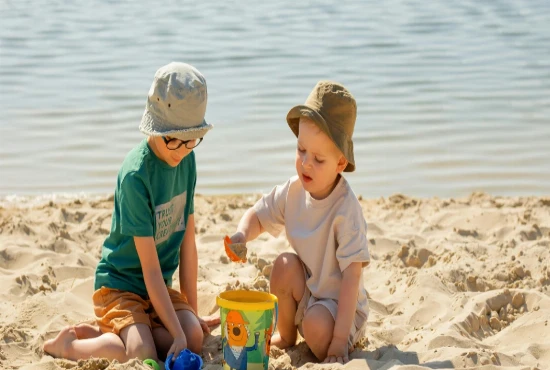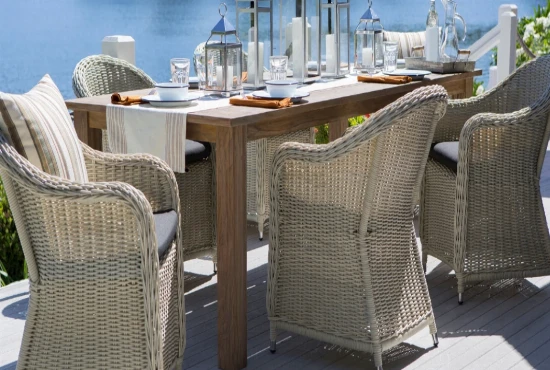Imagine a place where you can view fine art, explore the depths of space, step back into the Gilded Age, and let your kids play with interactive science exhibits—all in a single afternoon. Welcome to the Museum of Arts and Sciences (MOAS), Daytona Beach’s largest and most comprehensive museum. Nestled within 90 acres of lush Florida preserve, MOAS is more than a museum—it’s an experience.
Whether you’re a traveler seeking a dose of local culture, a family looking for educational fun, or a curious mind wanting to discover something new, MOAS is the perfect place to spend a few hours. The museum houses over 30,000 objects, spanning fine and decorative arts, natural history, early American artifacts, and hands-on STEM exhibits. Plus, it includes a planetarium, nature trails, and even a massive Coca-Cola memorabilia collection that surprises and delights visitors of all ages.
In this blog, we’ll guide you through spending one afternoon at MOAS—what to see, where to go, and how to make the most of your visit.
The Root Family Museum: A Journey Through Americana
Start your afternoon at MOAS by diving into one of its most popular attractions: the Root Family Museum. This fascinating exhibit pays homage to American innovation and everyday life in the early 20th century. Originally donated by the Root family—who played a major role in the development of the Coca-Cola bottling process—this wing of the museum is a nostalgic walk through American industrial history.
One of the most eye-catching displays is the Coca-Cola memorabilia collection, which features over 800 artifacts including early vending machines, glass bottles, advertising signs, and even a 1930s soda fountain fully restored to its former glory. It’s not only for soda lovers—this exhibit also paints a broader picture of marketing, design, and branding evolution in American culture.
But the Root Family Museum doesn’t stop there. It includes a fully reconstructed mid-century train station and vintage railcars that allow you to step aboard and feel what travel was like decades ago. The attention to detail is astounding—from period-specific furniture to working model trains.
This part of the museum also includes displays of vintage teddy bears, classic toys, and antique telephones, offering a rich blend of nostalgia and history. Children and grandparents alike find something to enjoy here, making it a perfect place to start your visit.

Charles and Linda Williams Children’s Museum: STEM-Powered Play
If you're visiting MOAS with kids—or you're just a kid at heart—you’ll want to head next to the Charles and Linda Williams Children's Museum. This 9,300-square-foot area is dedicated to hands-on learning, with over 60 interactive exhibits focused on science, technology, engineering, and mathematics (STEM).
Here, your child can launch air rockets, build structures with magnetic blocks, explore motion with pulley systems, and conduct fun experiments in sound and light. The museum’s “Build and Test” area is especially popular, where little engineers can design vehicles and test them down ramps to see how gravity and speed interact.
This section is carefully designed not only to entertain but also to educate. Everything is touch-friendly, safe, and encourages critical thinking. Parents can relax on benches or participate in the fun—it’s learning without screens, and with real-life results.
The Children’s Museum also connects seamlessly to the Planetarium and the rest of MOAS, making it easy to plan a continuous flow through your afternoon. Plus, it’s indoors and air-conditioned—ideal for those humid Florida days.

The Planetarium and Science Center: Space Awaits
A visit to MOAS wouldn’t be complete without stopping at the Lowell and Nancy Lohman Planetarium, which offers daily live and pre-recorded shows exploring astronomy, space exploration, and physics. With its state-of-the-art Digistar 6 projection system, this planetarium provides a fully immersive experience as you gaze at a digital sky dome that simulates everything from the Daytona night sky to distant galaxies.
Educational and visually stunning, these shows are hosted by knowledgeable staff who guide you through celestial wonders—from black holes to the life cycle of stars. It’s not just for space enthusiasts; anyone who has looked up at the night sky in awe will appreciate this cosmic journey.
Before or after the show, visit the adjoining Science Center, where you can explore more about physics, geology, and natural history through well-curated exhibits. Kids love the dinosaur skeletons and mineral displays, while adults may enjoy the rare meteorite samples and touchable fossils.
A tip: Check the planetarium schedule in advance. Shows typically run 20–30 minutes and are included with museum admission, but seating is first-come, first-served.

Fine Arts, Florida History & Nature Trails
After exploring the high-energy exhibits, take a slower stroll through the Fine Arts Wing, which showcases an impressive permanent collection of American, African, Cuban, and European art. Highlights include works by Georgia O’Keeffe, Thomas Hart Benton, and pieces from the Baroque to Modernist periods. This area is serene, beautiful, and perfect for those seeking creative inspiration or quiet reflection.
Next, walk through the Florida History Gallery, which provides insight into the rich cultural and ecological tapestry of the Sunshine State. From early Native American settlements to Spanish colonization and frontier life, the exhibits tell Florida’s story in engaging, visually rich displays.
If weather permits, cap off your afternoon with a peaceful walk on the Tuscawilla Preserve, a 90-acre nature trail system located behind the museum. You’ll find cypress trees, wetland flora, birdlife, and maybe even a turtle or two along the boardwalks. It’s a gentle and scenic contrast to the indoors and offers a glimpse of Florida’s natural beauty.

Visitor Tips & Final Thoughts: Making the Most of Your Visit
To truly enjoy your afternoon at the Museum of Arts and Sciences, here are a few tips:
-
Plan your route: Start with the Root Family Museum, then move through the Children’s Museum, Planetarium, Art Galleries, and finally the Nature Trail.
-
Check the planetarium schedule ahead of time to time your visit around one of the shows.
-
Arrive early afternoon (1–2 PM) to enjoy everything before the museum closes.
-
Wear comfortable shoes, especially if you plan to explore the nature trails.
-
Pack snacks or water—while there is a gift shop, food options are limited on-site.
-
Membership deals are available and often pay for themselves after just two visits if you’re a local.
In conclusion, MOAS is not your average museum. It’s a dynamic, multi-dimensional space where science, history, art, and fun collide. It doesn’t matter if you’re a local looking for a weekend adventure or a traveler exploring Daytona Beach—this museum has something meaningful to offer.
Spend just one afternoon here, and you’ll walk away with a deeper appreciation for art, science, and the stories that shape our world.





Leave a Reply